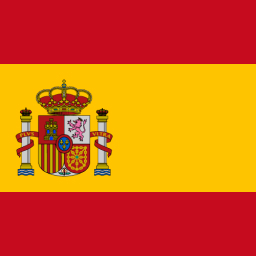Podia vs Kajabi (2025): An even better alternative
We looked at how Podia and Kajabi compare to each other (and to Esmerise) to help you decide what is the best platform for you.
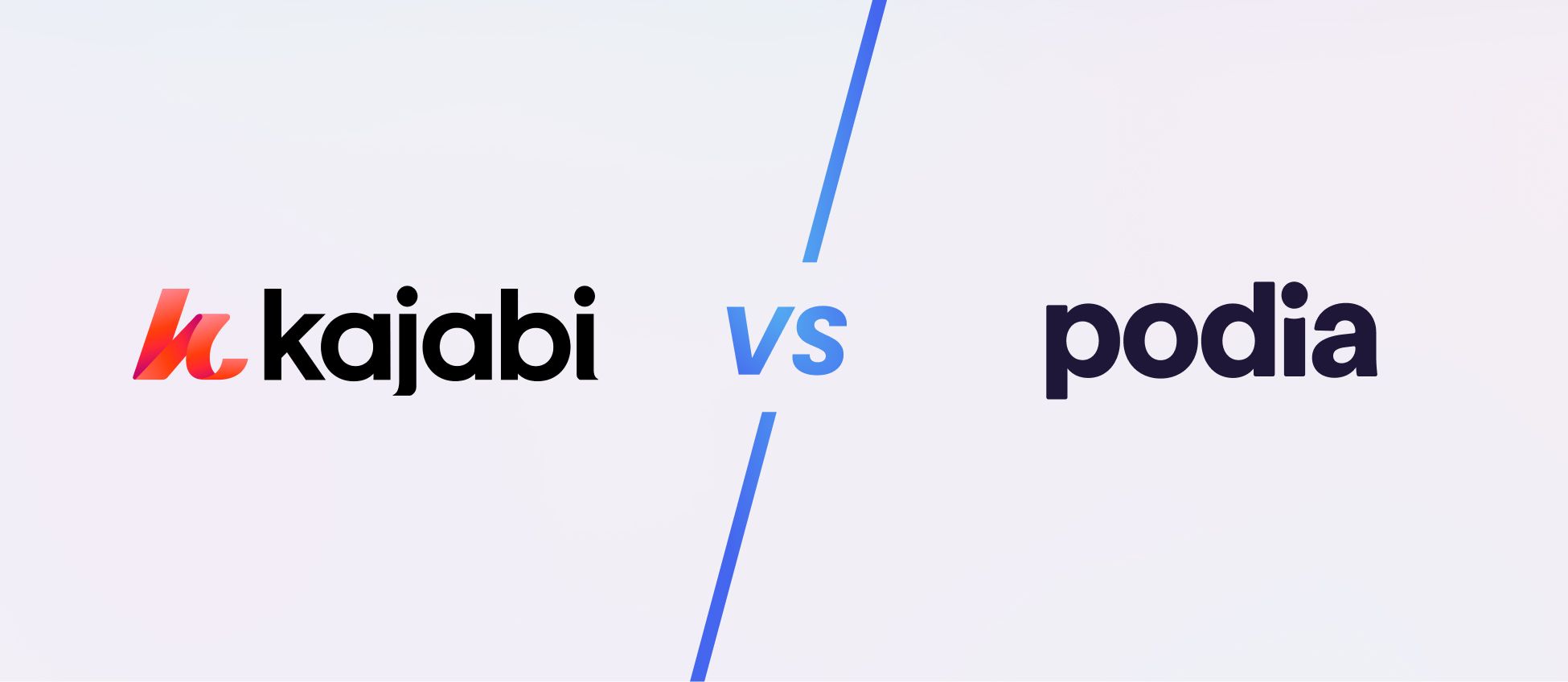
Introduction
Most comparisons between Podia and Kajabi stop at a superficial feature list. This analysis goes deeper, built on years of hands-on experience helping creators migrate from these platforms.
As the Esmerise team, we didn’t just *use* Podia and Kajabi: we thoroughly documented transitions, pain points, and success factors for hundreds of creators who left them behind. That gives us a unique and grounded perspective on how they actually perform.
We know exactly where each platform shines, where it creates friction, and which specific creator needs each one is, or isn’t, designed for. We’ll conduct a pragmatic evaluation of Podia and Kajabi, focusing on what truly matters for creators. Then, we’ll introduce Esmerise: the platform we engineered as a direct response to the gaps and opportunities we discovered along the way.
The goal is to give you the clarity you need to make a critical strategic decision. Your platform shapes your operational efficiency, your students’ experience, and your business success.
As the Esmerise team, we didn’t just *use* Podia and Kajabi: we thoroughly documented transitions, pain points, and success factors for hundreds of creators who left them behind. That gives us a unique and grounded perspective on how they actually perform.
We know exactly where each platform shines, where it creates friction, and which specific creator needs each one is, or isn’t, designed for. We’ll conduct a pragmatic evaluation of Podia and Kajabi, focusing on what truly matters for creators. Then, we’ll introduce Esmerise: the platform we engineered as a direct response to the gaps and opportunities we discovered along the way.
The goal is to give you the clarity you need to make a critical strategic decision. Your platform shapes your operational efficiency, your students’ experience, and your business success.
How easy are Podia, Kajabi, and Esmerise to use?
How truly intuitive are these platforms in daily work? Beyond the marketing claims, here we examine the actual user interface and operational efficiency of Podia, Kajabi, and Esmerise.
| Feature | Kajabi | Podia | Esmerise |
|---|---|---|---|
| Initial accessibility | ⭐️⭐️⭐️ | ⭐️⭐️⭐️⭐️⭐️ | ⭐️⭐️⭐️⭐️⭐️ |
| Day-to-day operational speed | ⭐️⭐️⭐️⭐️ | ⭐️⭐️⭐️⭐️ | ⭐️⭐️⭐️⭐️⭐️ |
| Learning resources | Text-based, English only | Video/text, English only | Video guide, 4 languages |
| Mobile management | Via mobile browser | Via mobile browser | Full functionality |
Kajabi
Interface
Kajabi presents itself as an undoubtedly powerful and feature-rich platform. This very richness, however, often translates into significant complexity. Options are spread across multiple menu levels, with terminology that isn't always immediate, making initial navigation less than fluid. Consequently, be prepared for a non-negligible initial time investment ⏳ just to get familiar, and even more to master advanced operational workflows.Resources and Language
Like Podia, Kajabi is also available only in English 🇬🇧. It must be acknowledged, however, that its internal help center is excellent: a vast and well-organized library of text articles, superior to Podia's.Mobile Management
Here, Kajabi shows a significant weakness. The interface for managing via mobile (as visible in the screenshot in the next section) has obvious layout problems, often making it frustrating or even unusable for real tasks on a smartphone.Podia
User Interface
Podia's interface is well-proportioned and, in our opinion, a bit more fluid than Kajabi's, especially since their last platform redesign. The user experience on Podia is therefore more direct, allowing for somewhat quicker familiarization with the main tools.Resources and Help Language
Podia's admin area and its documentation are only in English 🇬🇧. A positive aspect to highlight is that when accessing new sections or features of the platform, you often find short and useful contextual video guides 🎬.Mobile Management (for Creators)
Podia does not have a native mobile app dedicated to creators for managing their business, which is undoubtedly a drawback for those who need to operate frequently on the go. However, it must be said that, as we've already seen in other comparisons, almost no platform on the market, apart from Esmerise, offers a truly complete creator application. Podia's responsive web interface does, however, allow for controls and edits from a smartphone.Esmerise
Interface
Launched in 2021, Esmerise leverages newer technologies for a radically different user experience. The main innovation? No separation between backend and frontend. The view is unified and consistent for both creator and student, eliminating the need to switch between "build" and "preview" modes. ✨ The result is an extremely fluid, intuitive, and contextual workflow that reduces steps and makes the platform immediately understandable.Resources
We chose a targeted learning approach: instead of scattered text documentation, we offer a complete video guide. It's broken into short chapters for quick, visual learning, guiding you step-by-step. Available in Italian, English, Spanish, and French 🇮🇹🇬🇧🇪🇸🇫🇷.Mobile Management
Designed mobile-first from day one, the Esmerise interface ensures a flawless smartphone experience (as seen in the screenshot), both via browser and the dedicated app 📱. As a creator, you can manage every single feature without limitations directly from the app: a first in this industry. ✅How do Podia, Kajabi, and Esmerise handle course creation and student experience?
Let's get to the core offering: how are courses built and, crucially, experienced by your students on these platforms? 🧑🎓
In terms of basic features for structuring content (lessons with text, video, attachments, quizzes, progressive release or drip), Podia and Kajabi offer very similar toolsets. Unless you have specific needs, the differences here are minor and not decisive for your choice.
The real game-changer, however, lies elsewhere: the student-facing learning experience. This is where fundamental divergences emerge, directly impacting engagement, completion rates, and learning success.
In terms of basic features for structuring content (lessons with text, video, attachments, quizzes, progressive release or drip), Podia and Kajabi offer very similar toolsets. Unless you have specific needs, the differences here are minor and not decisive for your choice.
The real game-changer, however, lies elsewhere: the student-facing learning experience. This is where fundamental divergences emerge, directly impacting engagement, completion rates, and learning success.
Kajabi
Course Creation
Kajabi's builder provides all the essential functionalities to create complete online courses: from inserting multimedia content (video, audio, text) to adding simple multiple-choice quizzes.The editor adopts a rather traditional setup: the classic list of contents (modules and lessons), and the option at the top to view the preview in a separate tab. The arrangement of options is a bit scattered and some features can feel hidden, which means that the interface requires some time to be fully mastered, especially at the beginning when you need to locate all the functions.
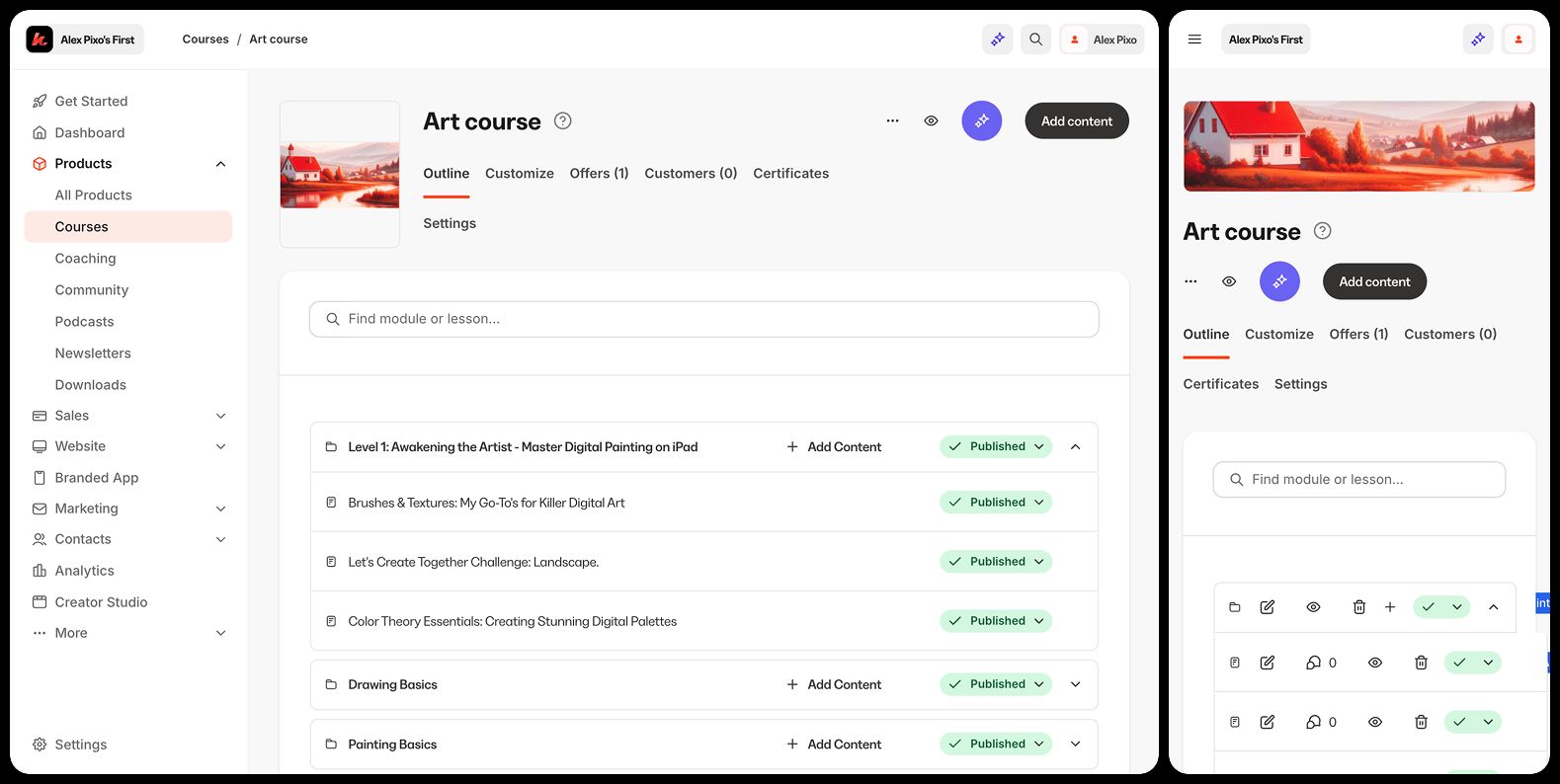
User Experience (Student)
On the student side too, Kajabi offers the classic setup with a content list on the left and the lesson player opening in the main area. It's a traditional approach that, honestly, is starting to feel rather 'outdated' and visually unappealing ('a bit plain/ugly'), especially when compared to Podia's more polished aesthetics or, even more so, Esmerise's integrated experience. While viewing the lesson, there's no sign of integrated community or gamification; the experience is solely focused on the video or text content, making it functional but potentially isolating and unstimulating compared to more modern and engaging models. 🧊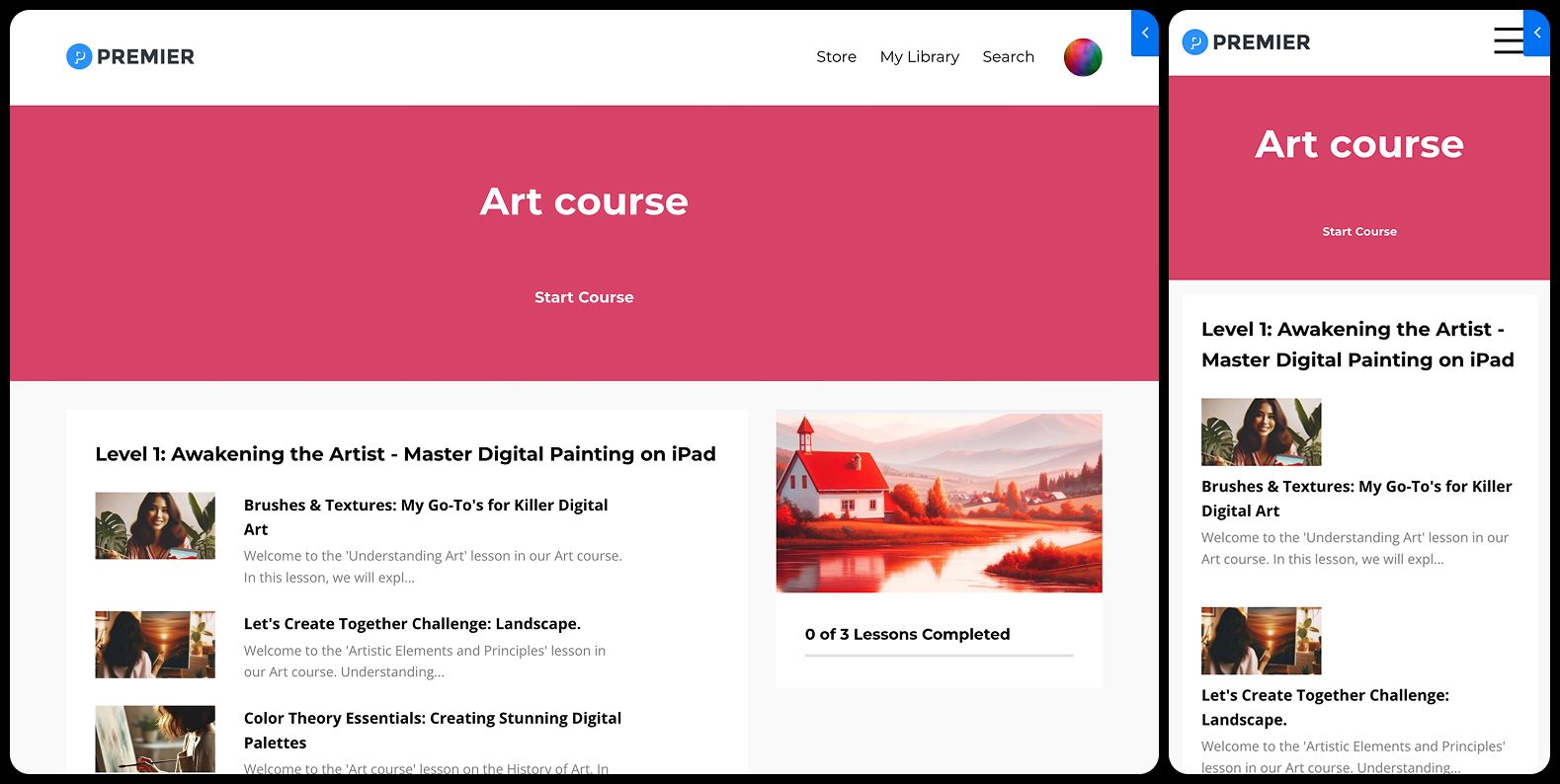
Podia
Course Creation
Podia's course builder offers a clean and functional interface. In our opinion, compared to Kajabi, the buttons and various functions on Podia are positioned more clearly, which facilitates the initial familiarization phase.However, beyond this first impression, once you get used to it, the functions for structuring a course (adding content, quizzes, etc.) are substantially comparable between the two platforms.

Student User Experience
For course consumption, Podia adopts the classic "list of contents" layout. A standard e-learning approach that, however, is beginning to feel dated and not very engaging for the modern student.Although Podia includes good community features, these operate rather separately from the course area. Integration amounts to a discreet 'Discussions' button in the course interface, useful for occasional questions, but insufficient to truly merge learning with dynamic social interaction.
On the mobile front, students access content exclusively via browser, as Podia does not offer a dedicated app.
Overall, this "old-fashioned" vision of course consumption, while ensuring basic functionality, struggles to compete with the more integrated and stimulating user experiences available today. That said, it must be acknowledged that Podia's user interface for viewing courses is, in itself, extremely clean, tidy, and well-designed.

Esmerise
Course Creation
Esmerise includes essential learning tools (text, video, quizzes, drip) but radically modifies the workflow. Creation happens directly within the academy 🪄, in the same environment as the student, eliminating the backend/frontend separation. You build seeing exactly what they'll see. The result is a noticeably faster, more intuitive, and coherent process.
User Experience (Student)
Here the difference is substantial: courses aren't isolated modules, but part of an integrated learning ecosystem. A synergy is created between content, community, and gamification, transforming the classic lesson list into a living, participatory digital academy 🎓.This integration yields measurable results: our internal data shows completion rates up to 3x higher 📈 compared to traditional list-based platforms. As we'll explore in the Gamification & Community section, it's precisely these social and engagement dynamics that transform the student's experience and motivation.

What sales and marketing tools do Podia, Kajabi, and Esmerise offer?
While in course creation, Podia and Kajabi have nuanced differences, it's on the sales and marketing 💰 front that clear strategic divergences emerge, crucial for your business.
Let's now examine the fundamental tools to monetize and grow your activity: from product and payment management, to building an effective site and sales pages, through to the essential integrations with the external marketing ecosystem.
Let's now examine the fundamental tools to monetize and grow your activity: from product and payment management, to building an effective site and sales pages, through to the essential integrations with the external marketing ecosystem.
Kajabi
Product and Payment Management
Kajabi stands out for its breadth of offering: it allows selling courses, coaching, memberships, and even podcasts (an uncommon option). Payment management is equally flexible:- You can connect Stripe and PayPal simultaneously, maximizing customer options.
- It offers Kajabi Payments (built-in), with Stripe-like features (cards, wallets, BNPL), albeit with more limited geographic availability (check for your country).
Beware of the pricing plans, however: this is Kajabi's major drawback. The $89/month "basic" plan drastically limits you to selling just one product 🤯. The next tier at $119/month allows only three. Effectively, for minimal operational freedom, the required investment quickly jumps to $159/month.
Sales Pages and Website
The page editor is a recognized strong point for Kajabi. It provides numerous good-quality templates and a powerful interface for customization. A peculiar feature is the optimization for 4 breakpoints (including landscape/portrait tablets), an advanced technical detail, although its practical impact is reduced by low tablet usage (~2% of traffic).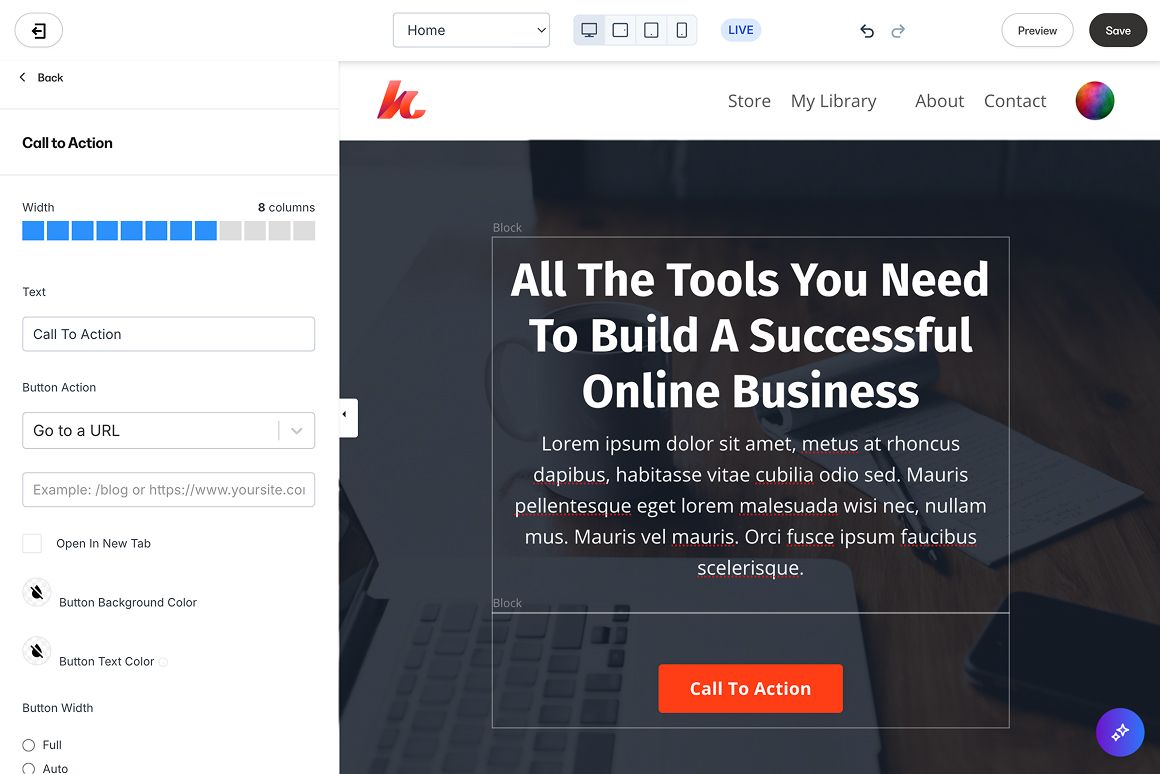
External Integrations
Regarding external connectivity, Kajabi presents a notable and unexpected limitation: direct integrations with essential third-party services (e.g., Zapier, Google Analytics, Facebook Pixel) are blocked on lower-tier plans 🔒.
This is a puzzling choice, especially as the $89/month plan competes on price with mid-tier plans elsewhere where such integrations are standard. The result? Those starting on Kajabi basic operate in a relatively isolated ecosystem from the rest of their marketing tools.
As partial compensation, Kajabi includes a built-in email marketing system (absent in Teachable). It's a more basic tool compared to dedicated solutions (e.g., ActiveCampaign) but adequate for newsletters and simple automations.
However, beware: here too, the basic plan imposes a severe limit of just 250 contacts ✋. A paltry number that becomes an almost immediate bottleneck for anyone looking to grow their list or implement serious lead generation strategies.
Podia
Product and Payment Management
With Podia you can easily sell:- Complete online courses
- Digital downloads (ebook, template, audio file)
- Coaching sessions
- Webinars (by integrating external tools like Zoom or YouTube Live, then managing access and sales via Podia)
- Bundles of different products
- Access to dedicated Communities
Payment management relies on solid integrations with Stripe and PayPal, also offering the ability to set up installment payment plans for your customers.
Sales Pages and Website
Podia particularly impressed us with its features dedicated to site and sales page building. Its page builder ranks among the best we have tested, on par with Esmerise's, revealing a clear and strong strategic investment by the platform in this area.Unlike other platforms like Thinkific or Teachable, where site creation can seem almost like an ancillary feature, for Podia it represents a strong point, on which the company also invests in terms of communication and marketing.

External Integrations
Regarding external integrations, Podia offers a good starting set. It provides direct integrations with several well-known email marketing software, plus native connections with Discord for communities and with Zoom for webinars and coaching 💻.One aspect we found useful in Podia is its integrated email marketing system. For many creators, this internal solution can be more than sufficient for managing newsletters and simple automations, without the immediate need to add a dedicated service.
For more specific integration needs or to connect with tools not natively covered (like certain CRMs or advanced analytics tools), Podia relies on Zapier, as is common practice for many platforms.
In summary, Podia's integration management seemed practical and well-conceived overall to us.
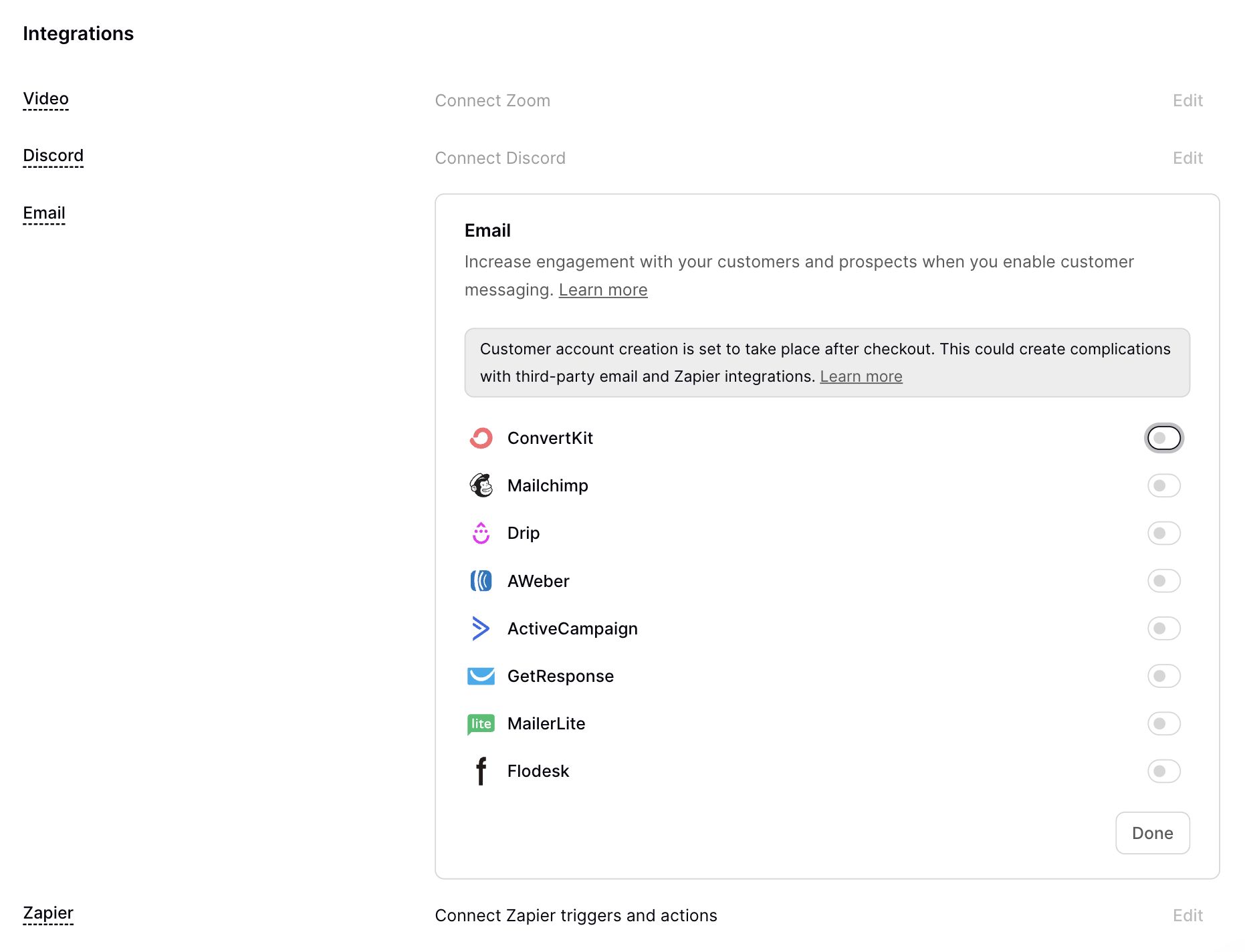
Esmerise
Product and Payment Management
Here Esmerise takes a noticeably simpler and more centralized approach compared to the "siloed" logic (separate products for courses, community, etc.) of Podia and Kajabi. Everything starts from a single product definition 💡.You decide the access type (one-time, subscription, installments, or free) and then simply associate:
- the learning content (modules, lessons)
- community permissions (which areas)
- any gamification bonuses.
This unified architecture shows its advantages especially with subscriptions, overcoming limitations seen elsewhere. With Esmerise you can easily:
- Create memberships that combine access to content + community + gamification in one plan.
- Allow a user to have multiple active subscriptions simultaneously (e.g., basic course + advanced coaching).
- Manage automatic upgrades between tiered plans (e.g., Standard to Premium), with proration and deactivation handled by the platform.
For payments, we offer maximum flexibility supporting Stripe and PayPal in parallel 💳, installment payments (with 3 provider options), and recurring subscriptions. All manageable in multiple currencies within the same academy, with the option to activate an optional module for automated electronic invoicing (tax calculation included) 🧾.
Sales Pages and Website
Our page builder is designed to combine power and intuitiveness. It allows you to create visually appealing, high-converting sales pages with no code needed, featuring seamless native integration with the checkout system.
External Integrations
Unlike the limited or intermediary-based approaches seen elsewhere, Esmerise focuses on direct native connections with your marketing ecosystem. The list is constantly growing and already includes essential tools like: ActiveCampaign, Aweber, Brevo, ConvertKit, Facebook Pixel, Flodesk, GetResponse, Google Analytics 4, Google Tag Manager, HighLevel, Klaviyo, MailerLite, MailChimp, PayPal, SmsHosting, Spoki, Systeme, TrustPilot, and more.The practical advantage? When a user purchases, their data flows automatically into your preferred CRM or email marketing software, with no need for Zapier or manual configurations. A cleaner, more reliable, and efficient workflow.
How do Podia, Kajabi, and Esmerise handle community and gamification?
| Feature | Kajabi | Podia | Esmerise |
|---|---|---|---|
| Gamification features | 🟡 Yes, but only in community | ❌ | ✅ Yes, integrated in one space |
| Community features | 🟡 Yes, but separate from course area | 🟡 Yes, but separate from course area | ✅ Yes, integrated in one space |
| Branded App | 🟡 Yes, with additional cost | ❌ | ✅ Yes, included |
A strategic aspect often overlooked by creators is this: designing learning paths that keep students engaged all the way to completion. 🎯
The connection is direct: higher completion rates mean more satisfied students, tangible results, positive word-of-mouth, and thus, greater sustainability for your business.
Conversely, a course with extremely low completion is, effectively, an ineffective product. Unfortunately, industry statistics are alarming: estimates suggest average rates between just 5% and 15% 📉. A huge problem.
However, there are proven levers to reverse this trend: the strategic integration of community 🤝 and gamification 🎮.
It is precisely on these elements, crucial for learning effectiveness, however, that neither Kajabi nor Podia manage to offer truly integrated and satisfactory solutions.
The connection is direct: higher completion rates mean more satisfied students, tangible results, positive word-of-mouth, and thus, greater sustainability for your business.
Conversely, a course with extremely low completion is, effectively, an ineffective product. Unfortunately, industry statistics are alarming: estimates suggest average rates between just 5% and 15% 📉. A huge problem.
However, there are proven levers to reverse this trend: the strategic integration of community 🤝 and gamification 🎮.
- Community recreates the social dynamic essential for learning: a place to interact, ask, share, and feel part of a group, drastically reducing dropout risk.
- Gamification (points, badges, levels, leaderboards) transforms learning into a more interactive and motivating experience, encouraging consistent progress.
It is precisely on these elements, crucial for learning effectiveness, however, that neither Kajabi nor Podia manage to offer truly integrated and satisfactory solutions.
Kajabi
Kajabi offers a dedicated platform, Kajabi Communities, well-structured for creating interaction spaces (feeds, discussions, live events) and with a good mobile experience. It's effective if you want to sell a community as a standalone product.The limitation arises when seeking integration with courses: the community remains a separate silo 🧱. There's no dialogue between lesson progress and discussions, missing the opportunity for contextual interactions and peer support directly related to the learning content.
Similarly, gamification (points, badges, etc.) is natively absent within the courses themselves. Consequently, if you're looking for an ecosystem where learning, social interaction, and game dynamics work synergistically, Kajabi does not offer this integrated solution.

Podia
Podia includes sound community features. These are conceived more as separate products to sell (or offer for free) rather than as a function deeply integrated into learning paths; an approach that we find similar to that of Kajabi. We were impressed by the ability to create both public (free) and private communities, offering considerable flexibility.On the gamification side, unfortunately Podia doesn’t offer any dedicated feature to increase student engagement.
As mentioned previously, the lack of elements like advanced gamification, and a community primarily designed as a standalone product, contribute to a learning experience that, while functional, can feel a bit dated. It should be said that a similar consideration, for these specific aspects, also applies to Kajabi.
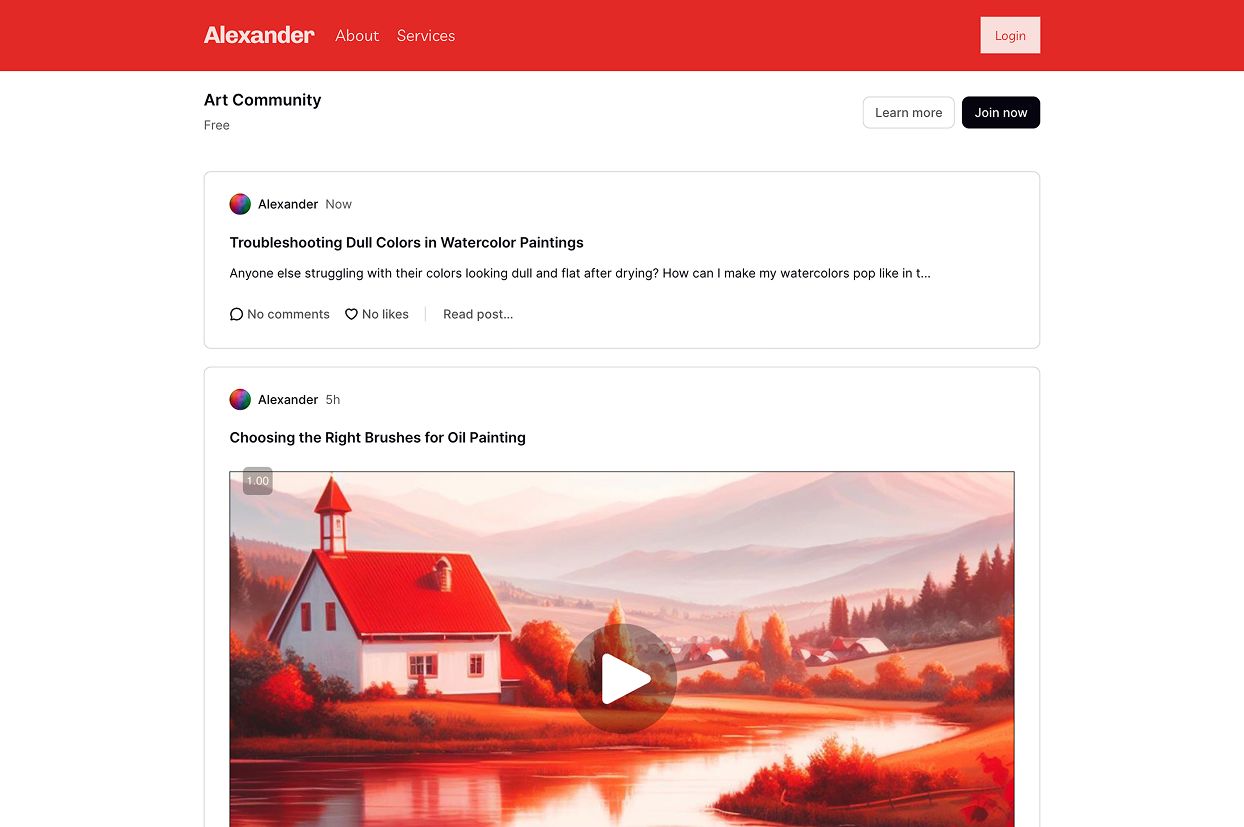
Esmerise
Unlike the separate features of Podia and Kajabi, Esmerise natively fuses community and gamification into the learning experience 🤝🎮. It does this through modular tools you activate and combine as needed.You can integrate a forum for structured discussions or a group chat for immediate interaction, all accessible directly within the learning environment, creating a cohesive space that fosters connection and active participation.
Gamification is also integrated and flexible: assign points or rewards for progress, consistency, or community interaction. You can build a real internal economy 🏆 with badges and rewards to boost engagement and motivation.
This integrated approach isn't arbitrary; it's backed by learning science research 🧠 (like studies published in academic journals such as BJET or Computers in Human Behavior) showing that the synergy between social interaction and game mechanics significantly accelerates learning and motivation.
For Esmerise, community and gamification aren't add-ons; they are foundational elements. We design academies as living digital environments ✨, crafted to deliver a superior learning experience for both your students and you.

What is the mobile experience and branded app offering like on Podia, Kajabi, and Esmerise?
| Feature | Kajabi | Podia | Esmerise |
|---|---|---|---|
| Creator app | 🟡 Stats & purchase notifications only | ❌ | ✅ Yes, no feature limits |
| Student app | ✅ Available | ❌ | ✅ Available |
| In-app community | 🟡 Via separate app (Kajabi Communities) | ❌ | ✅ Integrated in the main app |
| Branded app | 🟡 Yes, but with extra subscription | ❌ | ✅ Included at no extra cost |
Learning (and managing online businesses) is increasingly mobile 📱. Market forecasts (e.g., Mordor Intelligence) indicate explosive growth for m-learning (+20% annually).
This means not only do your students expect to consume content conveniently via smartphone, but you, as a creator, also need the flexibility to manage your business from anywhere.
In this context, offering a native app customized with your brand (white-label) ceases to be a luxury and becomes a strategic advantage ✨: it strengthens brand identity, ensures a superior user experience, and makes accessing your content immediate.
This means not only do your students expect to consume content conveniently via smartphone, but you, as a creator, also need the flexibility to manage your business from anywhere.
In this context, offering a native app customized with your brand (white-label) ceases to be a luxury and becomes a strategic advantage ✨: it strengthens brand identity, ensures a superior user experience, and makes accessing your content immediate.
Kajabi
Kajabi's mobile ecosystem is decidedly fragmented and impractical 😵💫. It relies on no less than three separate, non-communicating apps:- One for creators (with minimal functions: just stats and notifications)
- One for students (accessing courses)
- Yet another for the community.
The creator app, specifically, is almost useless for actual work: it doesn't allow creating or editing content, effectively requiring desktop use for any significant operation.
Kajabi does offer a custom-branded white-label app for students, but as a costly add-on: it requires an extra outlay of $89 or $199 per month 💸 on top of the main plan. An investment accessible only to established businesses.
In short: even paying extra for the branded app (which is good for students), the creator still cannot manage courses from mobile, and the multi-app structure remains a source of unnecessary complexity.
💡 Kajabi Mobile: 3 separate apps 😵💫 + up to $199/month extra for the branded app.

Podia
On the mobile app front, Podia unfortunately lags behind ❌: it offers no dedicated application. This applies both to creators, who cannot manage courses from an app, and to students, who do not have an app to access content. It's not even available as a paid option.This is a significant shortcoming, especially considering that several competing platforms provide at least a student app, albeit often branded with the platform's own mark. That said, it must be acknowledged that Podia's mobile experience via browser is well-made and functional.
💡 Podia Mobile: no app for creators or students, not even with extra cost.

Esmerise
Esmerise takes a revolutionary approach: it’s the only platform on the market offering a single native app (PWA) for everything ✨. Easily installable from the browser, it includes all the features for creators and students, without limitations.As a creator, you can manage your entire business directly from your smartphone ✅ - you don't even need a computer. Students access courses, forums, chats, gamification, and notifications in a single, coherent and seamless environment, a clearly superior experience compared to the fragmented setup of Podia and Kajabi.
The Esmerise app also comes at no additional cost and is fully customizable with your brand (logo, colors, fonts), reinforcing your professional identity.
The feedback we constantly receive: the app is one of the most appreciated features ❤️. In an increasingly mobile-first world, Esmerise’s unified approach is a significant competitive advantage.

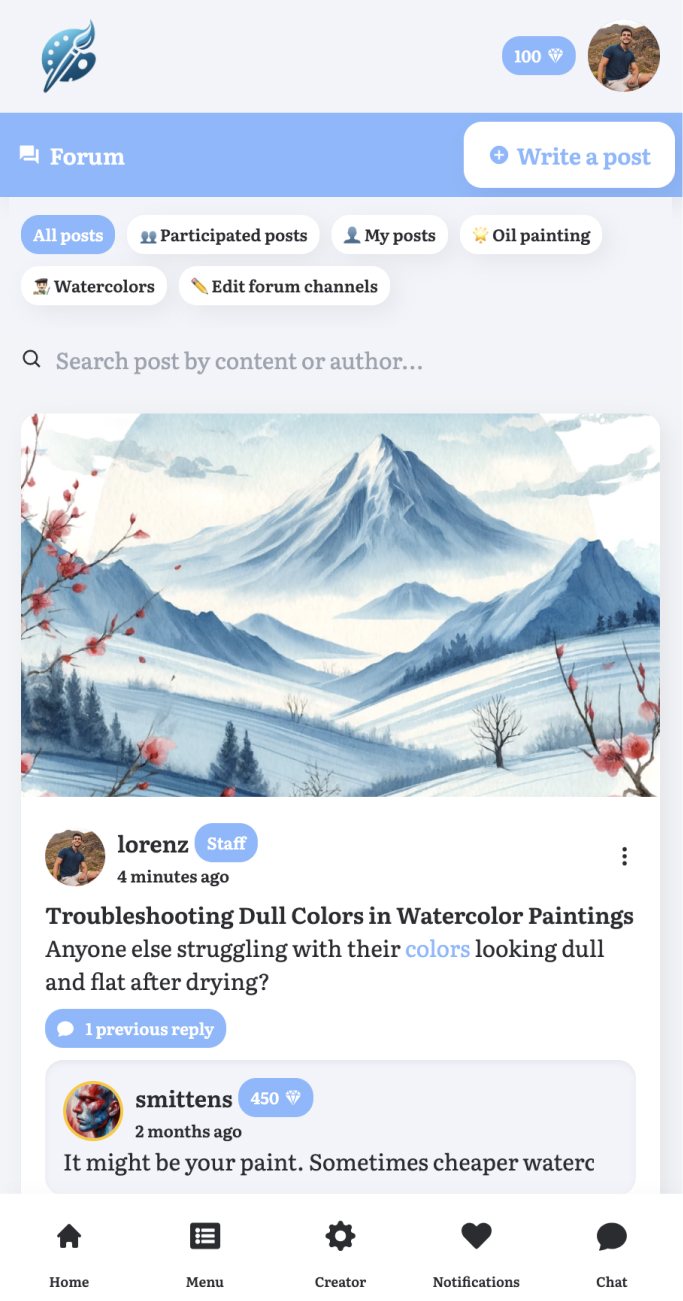
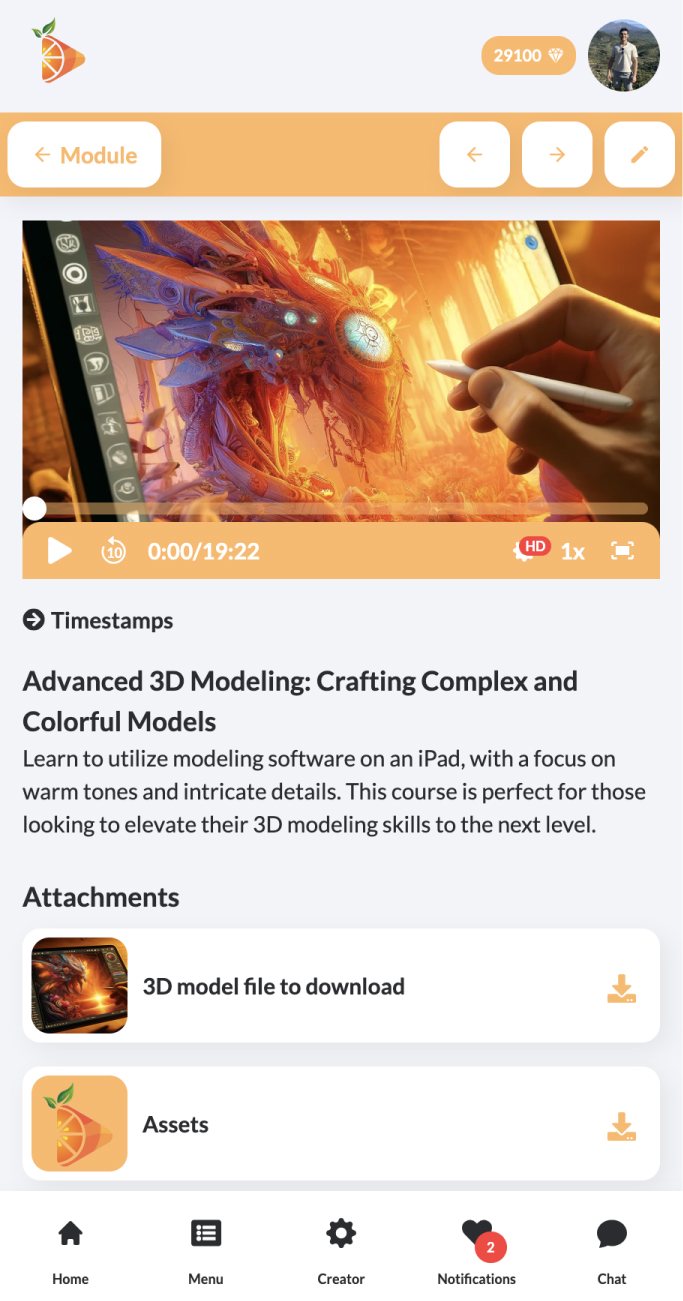


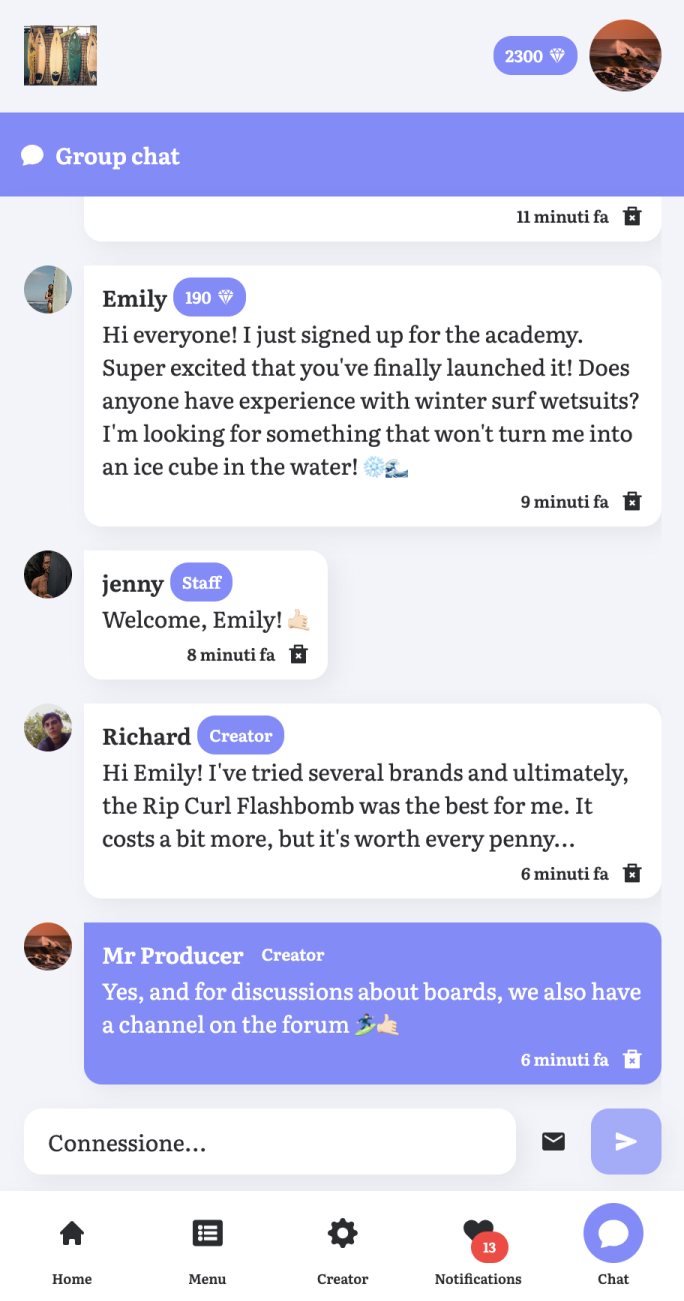






How much do Podia, Kajabi, and Esmerise cost?
Podia vs Kajabi: Pricing Strategies
Podia presents itself with a simple and decidedly more accessible plan structure. Its main paid plans (Mover from approx. $39/month, Shaker from approx. $89/month) offer unlimited products right away; the key difference is a 5% sales commission on the Mover plan, which is still reasonable and can be eliminated by upgrading to the Shaker.Kajabi, on the other hand, positions itself as a premium solution for established businesses with significant budgets. Its base plan (currently $89/month) is, in our opinion, extremely limited for its cost: it allows selling only one product and blocks access to important features like integrations, appearing more as an entry bait for more expensive plans.
In summary, for those starting out or looking for a complete, powerful solution without incurring prohibitive initial costs or frustrating limitations, Podia generally offers a much more advantageous and sustainable price/quality balance. Kajabi becomes an option to consider mainly when the budget allows and specific advanced features like the white-label app are needed.
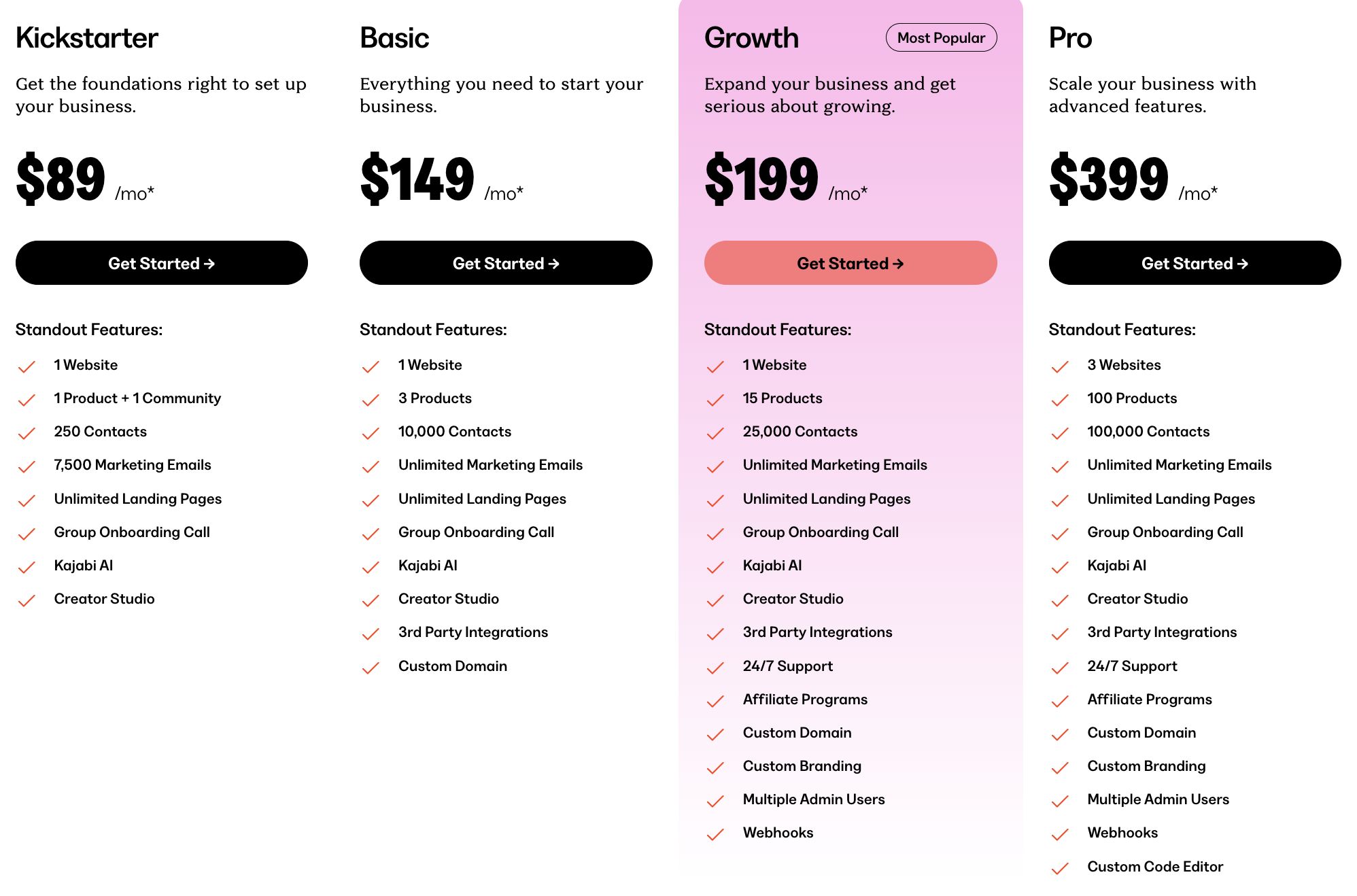

Esmerise's Positioning: Value and Accessibility
Our mission has always been radical: making the creation of extraordinary learning experiences accessible to everyone ✨. This is reflected in our plans:- The Basic Plan is designed for growth: it includes unlimited products ♾️ and many features that elsewhere require an upgrade, with no artificial limits for beginners.
- The Intermediate Plan offers exceptional value: it includes a fully brandable mobile app (with your icon and colors), a feature that comes at a high extra cost on Kajabi.
How can we offer more at competitive prices?
- Modern Technology 💡: Built later, we use a more efficient and scalable architecture, reducing infrastructure costs compared to older platforms.
- No "Brand Tax": Our price reflects the value of the product, not a hyped brand. A direct benefit for you.
- European Focus 🇪🇺: We understand the needs and often different budgets of European creators, and the platform is built with this in mind.
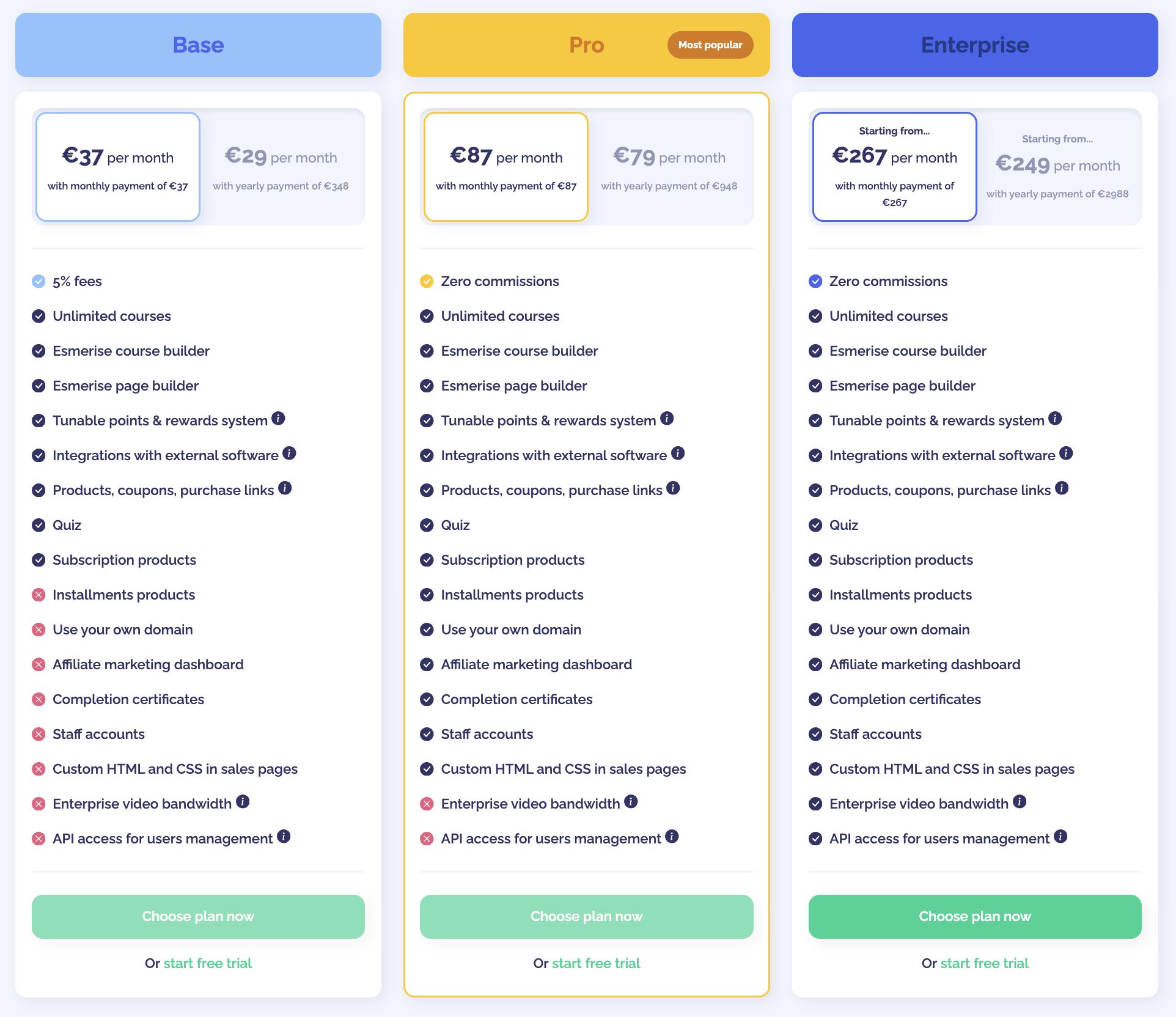
What kind of support and localization do Podia, Kajabi, and Esmerise offer?
Podia
An important factor outside the English-speaking world is language: Kajabi and Podia operate entirely in English 🇬🇧 (interface, resources, and support). If your students don't know English, consider that the lack of translations could complicate their daily use.Analyzing their support, Podia offers assistance via both chat and email. Creators who have switched to Esmerise from Podia have never expressed criticism of their customer service, and the platform's online reviews in this regard are generally very positive.
Kajabi, on the other hand, does offer quality live chat, but it's reserved for the expensive $199/month plan. Other plans rely on email, with longer response times (although support is generally considered reliable).
Esmerise, on the other hand, decisively focuses on international accessibility. Our platform, all guides, and technical support are available in 4 languages (🇮🇹🇬🇧🇪🇸🇫🇷). We offer support 7 days a week via email and WhatsApp, ensuring quick responses (usually within a few hours). And, a fundamental point for us: you will always speak with real people from our team, dedicated to helping you, without chatbots or automated responses. Human, multilingual, and truly responsive support that our customers greatly appreciate.
Final comparison: Podia vs Kajabi vs Esmerise
| Key aspect | Kajabi | Podia | Esmerise |
|---|---|---|---|
| Usability | ⏳ Somewhat steep learning curve 🧩 Traditional course creation interface 📱 Limited mobile mgmt (useless app) | ✅ Intuitive and simple 🧩 Traditional course creation interface 📱 Limited mobile mgmt (browser) | ✅ Intuitive and simple ✨ In-context interface 📱 Full mobile creator app |
| Language & resources | 🇬🇧 English only 📚 Excellent text help center | 🇬🇧 English Only 🎬 Help center & mini video guides | 🇮🇹🇬🇧🇪🇸🇫🇷 4 Languages (UI & support) 🎬 Complete video guide |
| Course (mgmt + student UX) | ⚙️ Traditional course editor 👴 Traditional student UX (list) 🧊 Course & community features isolated (different apps) | ⚙️ Traditional course editor 👴 Traditional student UX (list) 🧊 Community as separate product | 🪄 "In-context" course editor 🎓 Integrated student UX 🤝 Course + community + gamification |
| Marketing & sales | 📄 Powerful page builder 📧 Built-in Email/Funnels (limited) 🔒 Base Plan blocks integrations ✋ Base Plan: 1 Product Limit! | 📄 Great page builder & site management 📧 Integrated email marketing 🔗 Native integrations (all plans) ♾️ Unlimited products (all plans) | 📄 Intuitive & powerful page builder ✅ Flexible payments (EUR, Installments) 🔗 Native integrations (all plans) ♾️ Unlimited products (all plans) |
| Community & gamification | 🟡 Community features but separate from courses 🟡 Gamification only in community | 🟡 Community features but separate from courses ❌ No native gamification | ✅ Deeply integrated experience 🤝 Contextual forum/group chat 🏆 Advanced integrated gamification |
| Mobile & white-label app | 😵💫 3 Separate Apps! ❌ Useless creator app 💸 White-label app: $89/$199/mo extra sub. | ❌ No native creator app ❌ No native student app 📱 OK mobile browser experience | ✅ 1 Unified app (creator+student) ✅ Full creator management via app 🎁 White-label app included |
| Pricing & value | 💸 Expensive 🔒 Base ($89/1 prod) almost useless 💸 App adds $199/mo extra | ✅ Great value for money 💲 Simple & competitive plans ♾️ Unlimited products (paid plans) | ✅ Great value for money ♾️ Unlimited products (base paid plan) 🎁 White-label app included (mid-tier) |
| Support & localization | 🇬🇧 English only ⚠️ Chat high-tier only ✅ Reliable email (slower) | 🇬🇧 English Only ✅ Chat/Email, good feedback | 🇮🇹🇬🇧🇪🇸🇫🇷 4 Languages ✅ Email & WhatsApp 7/7 (all plans) 👩💻 Fast human support (no bots) |
Why is Esmerise built around creators?
At the end of this analysis, it should be clear not only how Podia and Kajabi compare, but above all what to look for in a platform truly built for the needs of modern creators.
Esmerise was born from this listening. We didn’t just create a tool, but a truly integrated ecosystem where courses, community, and gamification work in synergy to deliver effective and engaging learning experiences (with significantly higher completion rates). All supported by a native, brandable app, an interface designed to be intuitive, multilingual human support 🇮🇹🇬🇧🇪🇸🇫🇷 always available, and fair pricing plans that support your growth.
If you feel that traditional platforms are too complex, expensive, or limiting for your vision, maybe it’s time to consider an alternative designed specifically for you.
We invite you to try Esmerise. It’s free, no credit card required, and our team is ready to answer any questions you have.
Esmerise was born from this listening. We didn’t just create a tool, but a truly integrated ecosystem where courses, community, and gamification work in synergy to deliver effective and engaging learning experiences (with significantly higher completion rates). All supported by a native, brandable app, an interface designed to be intuitive, multilingual human support 🇮🇹🇬🇧🇪🇸🇫🇷 always available, and fair pricing plans that support your growth.
If you feel that traditional platforms are too complex, expensive, or limiting for your vision, maybe it’s time to consider an alternative designed specifically for you.
We invite you to try Esmerise. It’s free, no credit card required, and our team is ready to answer any questions you have.
Start building your business today.
Frequently asked questions
Kajabi or Podia: which platform to choose in 2025?
Kajabi is a powerful 'all-in-one' with advanced marketing, but it's expensive ($159+/month for serious use) and complex. Podia is simpler, more affordable ($39+/month with unlimited products), and great for selling various digital products, but with less customization and no native app. Esmerise offers a modern, integrated alternative with an included app and multilingual support.
What is Podia better suited for compared to Kajabi?
Podia is ideal for creators seeking extreme simplicity, a quick start, and low costs for selling courses, digital downloads, and communities as separate products. It has a good page builder and integrated email marketing. Kajabi is for those needing a vast marketing ecosystem and having a high budget. For a complete app, consider Esmerise.
Is Kajabi too complex or expensive for beginners?
Yes, Kajabi often proves too much for beginners. Its base plan ($89/month) is limited (1 product, integrations blocked) and the platform takes time to learn. Podia is more accessible. Esmerise offers a gentle learning curve with all-in-one power and an included native app in mid-tier plans.
What alternative offers better value for money than Kajabi and Podia?
If you're seeking a balance of power, ease of use, a complete included native app (for you and students), and multilingual support, Esmerise is designed to offer superior value. It overcomes Podia's limitations in app and deep integration, and Kajabi's in cost and complexity.
Are Podia and Kajabi only available in other languages?
No, both Podia and Kajabi have their admin interface and customer support primarily in English. This can be a barrier. Esmerise, on the other hand, offers its platform, guides, and human support (7/7 via email/WhatsApp) in 4 languages: Italian, English, Spanish, and French.




